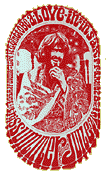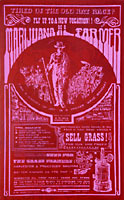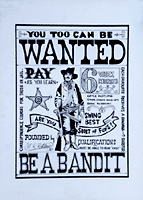
 |
||||||||||||||

|
||||||||||||
|
Roland Crump is a talented graphic artist who played a crucial role in the development of the original Disneyland in Anaheim and Walt Disney World in Florida. In the early 1960's, as a sideline venture, he designed and illustrated a series of innovative satirical and political posters. Crump grew up in Southern California and as a young man who loved to draw it was natural that he would gravitate to the animation field. In 1952, while he was working as a glazer for a pottery concern, Crump was hired as a young animation assistant, or what Disney employees called an "in-betweener". During the late1950's and early 1960's, Crump worked on a number of classic animation films including Peter Pan, Sleeping Beauty and 101 Dalmatians. In addition to being a fine draftsman, Crump was a skilled conceptual artist and designer. After Walt Disney saw some of the propeller mobiles he had created, Crump was hired as an "Imagineer." |
||||||||||||
 |
 |
|||||||||||
| Marijuana
Farmer (1961/7) Roland Crump/Bob Wendell Serigraph, 20" x 13" Esoteric/Blue Angel/Wendell |
Be
a Bandit (1962) Roland Crump Lithograph, 201/2" x 15" Esoteric Poster Company |
|||||||||||
|
Disney Imagineering is where the concepts and ideas for Disney's rides and attractions are born. As an Imaginer, Crump played a key role in the development of the concepts for Disneyland's Haunted Mansion and Enchanted Tiki Room, attractions that have thrilled millions of children. He also did a great deal of conceptual work on the n "It's a Small World" attraction which was created for the 1964 World's Fair in New York and later became a key part of Disneyland. About 1960, Crump had ideas for some posters that he wanted to do to satirize the Beatnik movement and the drug use that was becoming associated with it. However, he didn't have a publisher or distributor. Fortuitously, by chance, Crump was introduced to Howard Morseburg at a frame shop in the San Fernando Valley. Morseburg was a Seattle-based art dealer who traveled to Los Angeles frequently. He and Crump were kindred spirits and Morseburg decided to publish Crump's posters and to sell them to bookstores on the long road trips that took him throughout the western United States. Initially, Crump designed several satirical posters titled "Smoke Marijuana" with the figure of an Indian on it, "Cocaine Candy" and "Fly Heroin Airlines" and "Opium". Then, he and Morseburg collaborated on a series of political posters, which satirized the human rights record of revolutionary Cuba and the Soviet Union. Designing posters was a creative outlet for Crump, but they never sold in large enough quantities to become a significant source of income. As he became more involved with designing the Disney attractions for the 1964 Worlds Fair, he had to give up the collaboration with Morseburg and the poster enterprise. Today, Roland Crump is retired from Disney and speaks regularly on his experiences during what are now considered the golden years at Disney and the "Magic Kingdom". |
||||||||||||
| Jeffrey Morseburg | ||||||||||||
| Copyright
2003 Jeffrey Morseburg Not to be reproduced without the author's specific permission. |
||||||||||||